Crawfish is widely regarded as one of the most versatile and effective bait options for anglers, especially when targeting species like bass, catfish, trout, and other predatory fish. These freshwater crustaceans are a natural food source for many fish due to their distinctive movement, enticing scent, and abundance in freshwater ecosystems. Their ability to mimic the behavior of prey in the wild makes them especially appealing, increasing the chances of attracting a bite.
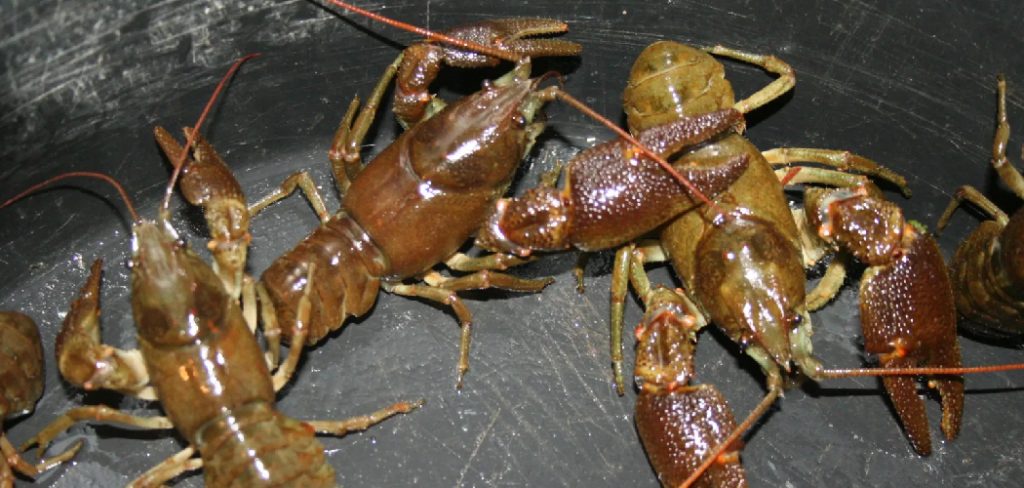
This article is a comprehensive guide to help fishers of all skill levels understand the essentials of crawfish baiting. From selecting the healthiest crawfish to preparing and properly hooking them, mastering these techniques can significantly improve your fishing results. You will also learn “how to bait a crawfish” effectively, ensuring that your methods are both ethical and efficient. By the end, you’ll be equipped with the knowledge to maximize your success on the water.
Understanding Crawfish as Bait
What Makes Crawfish Effective Bait?
Crawfish are highly effective bait because they are a natural prey species for many predatory fish in rivers, lakes, and ponds. Their hard shells, unique movement, and pungent scent closely mimic the live prey that fish instinctively hunt for.
When crawfish move through the water, their jerky, erratic motions trigger a predatory response in fish, making it nearly irresistible for them to investigate. Additionally, the scent of live crawfish further amplifies their effectiveness, acting as a powerful attractant even in low-visibility conditions like murky water or deeper fishing areas.
Live vs. Artificial Crawfish
When deciding between live crawfish and artificial alternatives, it is crucial to weigh the advantages of each. Live crawfish bring unparalleled authenticity, as their movement and natural scent are almost impossible to replicate.
They offer an edge when targeting wary fish that rely on their keen senses to identify prey. On the other hand, artificial crawfish—such as plastic baits or crankbaits—offer convenience and versatility. These lures are reusable, durable, and available in various colors and sizes to suit different fishing conditions. While they lack the natural scent of live bait, some are enhanced with scented coatings to improve their appeal.
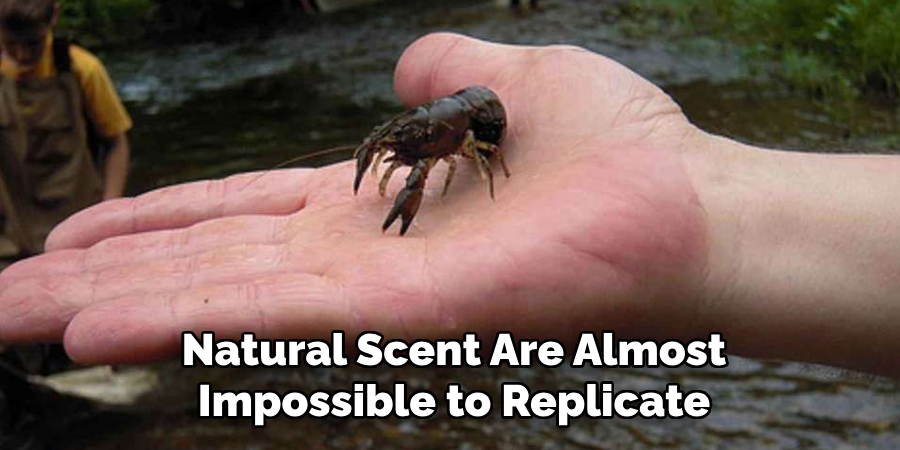
Legal Considerations
Before using crawfish as bait, it is essential to check local fishing regulations. Rules concerning the trapping and use of live crawfish vary significantly by location, with some areas imposing restrictions to prevent the spread of invasive species or protect local populations.
Ethical considerations are also important—live crawfish should be handled humanely and responsibly to minimize unnecessary suffering. Always ensure your methods align with both legal requirements and sound environmental practices for a sustainable and enjoyable fishing experience.
Catching and Storing Crawfish for Bait
How to Catch Crawfish
Catching crawfish for bait can be both simple and rewarding with the right techniques. Popular methods include hand-catching, using traps, or baited nets. Hand-catching typically works in shallow waters where crawfish are visible and can be manually picked up.
Traps, such as pyramid or cylindrical designs, are effective for catching larger quantities; they often use bait like fish pieces or chicken to attract crawfish. Baited nets are another method, ideal for scooping crawfish from rocky or vegetated areas. The best locations to find crawfish include rocky bottoms, shallow waters near the shoreline, or areas with dense vegetation where they like to hide.
Storing Crawfish
Store crawfish in a well-aerated container or cooler to keep them alive and fresh until needed. Using moist towels or damp newspapers can help maintain the right humidity level while preventing the crawfish from drying out. Avoid submerging them fully in water, as this can deplete oxygen levels and harm them. If storing crawfish for more than a day, feed them small amounts of vegetables or fish to keep them healthy.
Purchasing Crawfish
For anglers who prefer convenience, live crawfish can be purchased from bait shops or local markets. This alternative saves time and effort while still providing high-quality bait for a successful fishing trip.
Choosing the Right Crawfish for Bait
Selecting the ideal crawfish for bait involves considering several key factors to ensure a productive fishing trip.
Size Matters
The crawfish size should align with the target species you’re hoping to catch. For smaller fish such as panfish, opting for smaller crawfish is more effective, while larger crawfish are better suited for catching bass, catfish, and other sizeable species. Larger bait can attract bigger fish, but using the appropriate size increases the likelihood of a bite from your intended catch.
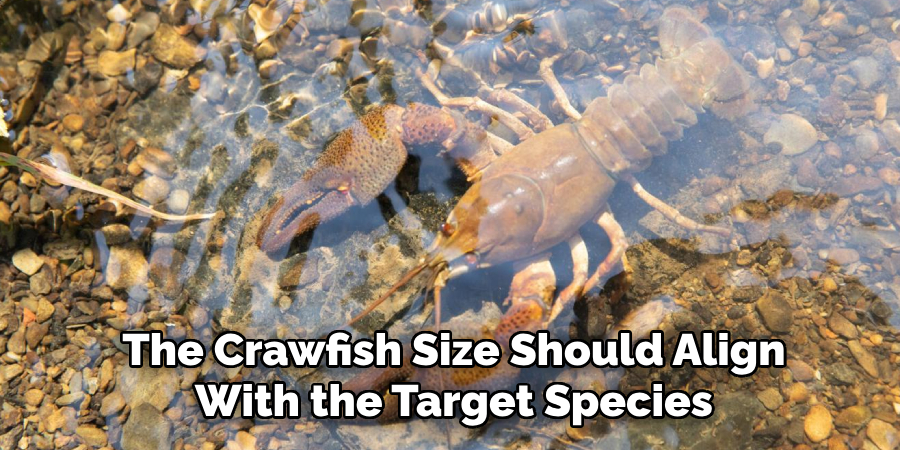
Checking for Health and Activity
Active and lively crawfish make superior bait. Healthy crawfish exhibit strong movement, vibrant coloration, and intact pincers, all indicators of their vitality. Vigorous crawfish are likelier to draw attention underwater, mimicking the natural movements that predatory fish find irresistible. Always inspect crawfish for signs of sluggishness or damage, as these may deter fish from biting.
Seasonal Considerations
Crawfish are particularly effective as bait during the warmer months of spring and summer when they’re naturally more abundant and a common part of many fish’s diets. Adjusting your baiting approach based on the season increases your chances of success, as fish are more likely to feed on crawfish in their natural habitat during these times.
How to Bait a Crawfish: Methods to Follow
Hooking a Live Crawfish
- Through the Tail
One effective method for hooking a live crawfish is by inserting the hook through the base of the tail. This technique allows the crawfish to maintain a natural swimming action, which is highly attractive to predatory fish. Begin by carefully piercing the soft underside of the tail and threading the hook upwards to ensure it remains secure without damaging the crawfish.
- Through the Back
Placing the hook just behind the head is another popular approach. By threading the hook between the carapace and the body, you allow the crawfish to move freely and stay alive longer while presenting a realistic and enticing profile to fish. Be gentle to avoid puncturing vital organs, as this could kill the bait prematurely.
- Through the Claws
You can hook the crawfish through one or both claws for a unique presentation. This technique works well in areas where fish actively target the upper portion of the bait. Secure the hook to keep the crawfish intact and provide lifelike underwater movement.
Using Crawfish as Cut Bait
Crawfish can be used as cut bait for bottom-feeding fish like catfish. Slice the crawfish into smaller pieces, such as the tail meat or head, and attach them to your hook. The tail meat is durable and emits a strong aroma, while the head is excellent for scent dispersion. Both options can effectively attract fish scavenging near the bottom.
Using Artificial Crawfish Baits
Soft plastic crawfish baits are versatile and effective for various fishing situations. Rig them on jig heads, Carolina rigs, or Texas rigs to suit your fishing preferences. Drag or hop the lure along the bottom to mimic natural crawfish movements, pausing occasionally to imitate a live crawfish’s defensive actions. This approach can draw strikes from various fish species, even in challenging conditions.
Techniques for Fishing with Crawfish Bait
Using Live Crawfish
Fishing with live crawfish can be highly effective when targeting predatory fish that hunt near rocky or vegetated areas. To maximize your success, cast your bait close to these structures where fish will likely ambush prey.
Allow the crawfish to crawl naturally along the bottom, creating a lifelike presentation that entices fish to strike. This technique takes advantage of the crawfish’s natural movements, making it particularly irresistible to opportunistic predators such as bass or walleye. Keep a close eye on your line for subtle bites, as fish may gently take the bait before a firm strike.
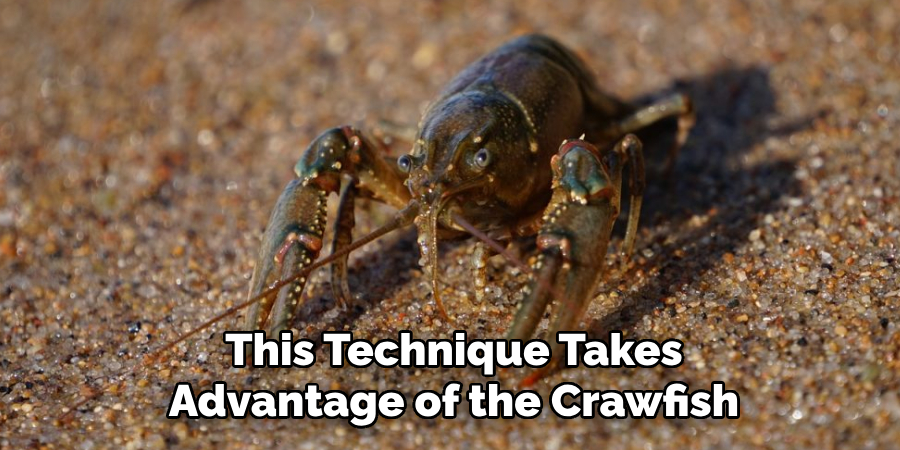
Using Cut Crawfish
Cut crawfish is an excellent choice for bottom-feeding fish, and there are specific methods to enhance its effectiveness. Bottom rigs, drop shot rigs or slip sinker rigs work best to keep the bait near the substrate where fish like catfish are actively feeding.
For optimal scent dispersion in still waters, use smaller cuts like the head, which releases potent aromas into the water. In moving waters, slightly larger pieces like the tail meat stay on the hook longer and continue to attract nearby fish. Experimenting with bait placement and size can significantly improve your chances of success.
Using Artificial Crawfish Lures
Artificial crawfish lures require precise retrieval techniques to mimic natural movements. Use slow dragging or hopping motions across the bottom to replicate a crawling or fleeing crawfish. You can also mix in small twitches to imitate defensive behaviors. Adjust your retrieve speed based on water temperature and fish activity—slowing down in colder water and speeding up when fish are more active. This adaptability makes artificial crawfish lures a versatile choice in various fishing conditions.
Tips for Maximizing Success with Crawfish Bait
Matching the Hatch
Using crawfish closely resembling the local population is a key strategy for increasing your fishing success. Fish are likelier to strike at bait that matches the natural prey they encounter daily. Study the local crawfish to identify their color, size, and patterns. Opt for live, cut, or artificial bait that mirrors these features as closely as possible. Adjusting your bait to mimic the local hatch ensures your presentation looks natural and appealing.
Targeting the Right Areas
To maximize your chances of a catch, focus on fishing spots where crawfish are naturally found. Rocks, submerged logs, and dense vegetation are prime locations as they provide shelter for crawfish and attract fish that feed on them. Casting your line near these structures allows your bait to be placed where fish seek food most actively.
Adjusting for Water Conditions
The clarity of the water significantly impacts how fish perceive your bait. Realistic crawfish with muted earth tones perform best in clear water. However, in murky or low-visibility conditions, brighter artificial crawfish can grab the attention of nearby fish more effectively. Keep this in mind when selecting and presenting your bait.
Experimenting with Rigs and Techniques
Every fishing outing is unique, making experimenting with different rigs and bait types essential. Rotate between live, cut, and artificial crawfish to see what works best for your target conditions and the fish species. Combining this testing approach with varying your retrieve techniques, speeds, and rig setups can significantly enhance your success.
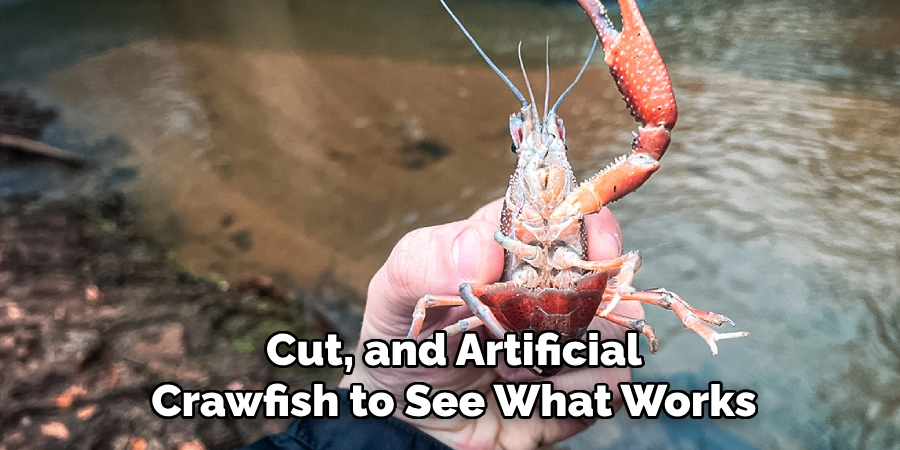
Common Mistakes to Avoid
Hook Placement Errors
Proper hook placement is critical when using live crawfish as bait. Injuring vital organs or restricting their movement can render the bait ineffective and unappealing to fish. Ensure that the hook is carefully placed to keep the crawfish alive and active, such as through the tail or the carapace, while avoiding harm to essential body parts.
Using the Wrong Size Crawfish
Size matters when selecting crawfish for bait. Oversized crawfish may intimidate smaller fish, while undersized ones might fail to catch the attention of larger target species. Always consider the fish you are trying to catch and match the size of your bait accordingly to maximize success.
Ignoring Local Regulations
Many areas have rules regarding live bait usage and crawfish trapping. Failing to comply with these laws can result in fines or penalties. Always research and adhere to local fishing regulations to ensure ethical and legal practices.
Failing to Maintain Crawfish Health
Live crawfish are most effective when they are lively and robust. Neglecting proper storage methods, such as keeping them in a well-oxygenated and cool environment, can result in weak or dead bait. Prioritize maintaining their health to improve your chances of attracting fish.
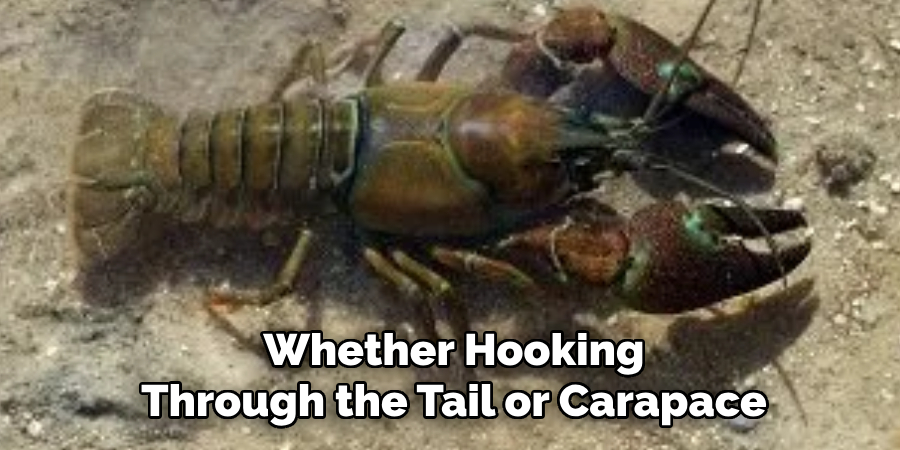
Conclusion
Using crawfish as bait offers anglers a highly effective and versatile option for attracting a range of fish species. By understanding how to bait a crawfish properly and selecting the right size, you can significantly increase your success rate.
Whether hooking through the tail or carapace, experimenting with different techniques and rigs enables you to fine-tune your approach for varying conditions. Always respect local wildlife and adhere to fishing regulations to promote ethical practices. With proper care and preparation, crawfish can be a game-changing addition to your fishing toolkit, ensuring a rewarding experience on the water.
About the Author
Jennifer Branett is the author of Fishy Kayak and an expert in fish-related fields, with over 10 years of experience. Her work blends passion for fishing with a commitment to conservation.
Educational Background
Degree: Bachelor’s in Marine Biology
Institution: University of California, Santa Barbara
Specializations: Aquatic ecosystems, fish behavior, and sustainable practices
Professional Experience
Conservation Projects:
Collaborated with local organizations to restore aquatic habitats
Developed educational programs on sustainable fishing practices
Publications:
Authored articles for fishing magazines and environmental journals
Featured speaker at fishing expos and conservation conferences
Key Areas of Expertise
Fishing Techniques:
Kayak fishing strategies
Freshwater and saltwater fishing methods
Environmental Stewardship:
Advocacy for sustainable fishing
Promoting biodiversity in aquatic environments
Awards and Recognition
Recipient of the [Specific Award Name] for contributions to marine conservation
Recognized as a leading voice in the fishing community by [Organization/Publication Name]
Community Engagement
Workshops and Seminars:
Regularly hosts events to educate anglers on sustainable practices
Engages with youth programs to inspire the next generation of fishers
Online Presence:
Maintains an active blog sharing tips, stories, and conservation efforts
Engages with followers on social media to promote fishing ethics
Personal Interests
Enjoys kayaking in scenic locations
Passionate about photography, capturing the beauty of nature
Advocates for local conservation efforts in her community
